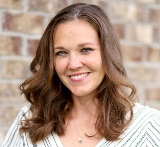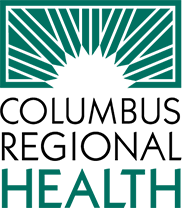What is the difference between a screening and diagnostic mammogram?
Breast care is not a topic that most people find comfort in discussing, yet it is extremely important to your overall health and wellbeing. One of the best tools in breast health is imaging. Imaging can come in many different forms: mammograms, MRI and ultrasound. One of the most common questions asked is “What is the difference between a Screening Mammogram vs. a Diagnostic Mammogram?"
Screening mammograms are a preventive exam, usually done each year, and can start at the age of 40. Screening mammograms are for those who have no breast symptoms. This is similar to having your annual pap smear at the OBGYN, screening colonoscopy, or dental cleaning. A typical screening mammogram includes two images of each breast. A board-certified radiologist reads the exam, sends the results to the care provider, and discusses the results with the patient. Screening mammograms are covered by most insurances. And for those that do not have insurance, CRH is pleased to offer other funding for breast care services.
Diagnostic mammograms are used when a patient finds a lump, experiences pain in a specific area, or a change in their breast. Diagnostic mammograms are also used as a follow up on an abnormal screening mammogram. A diagnostic mammogram is an in-depth exam that includes more specialized imaging views to concentrate on the area of concern. The mammography technologist could perform magnification views, spot compression and different angle views. A radiologist reviews the case at the time of exam and works one-on-one with the technologist to verify if there are any additional imaging needs, to include ultrasound, if a biopsy is needed, or if all imaging is complete. The day of the diagnostic exam you will know the results, be given a recommendation for follow up imaging, or be informed if a biopsy is needed. It is important to note that you will need to check with your insurance as coverage varies.
Always remember, doing monthly self-breast exams at any age as well as having an annual screening mammogram starting at age 40 is the first line of defense. Detection is key. For more information, please visit CRH.org/breasthealth or call 812-376-5064.

Elizabeth A. Youngman RT(R) (CT)
Manager of Outpatient Imaging Centers
Columbus Regional Breast Health Center
View All Success Stories
Screening mammograms are a preventive exam, usually done each year, and can start at the age of 40. Screening mammograms are for those who have no breast symptoms. This is similar to having your annual pap smear at the OBGYN, screening colonoscopy, or dental cleaning. A typical screening mammogram includes two images of each breast. A board-certified radiologist reads the exam, sends the results to the care provider, and discusses the results with the patient. Screening mammograms are covered by most insurances. And for those that do not have insurance, CRH is pleased to offer other funding for breast care services.
Diagnostic mammograms are used when a patient finds a lump, experiences pain in a specific area, or a change in their breast. Diagnostic mammograms are also used as a follow up on an abnormal screening mammogram. A diagnostic mammogram is an in-depth exam that includes more specialized imaging views to concentrate on the area of concern. The mammography technologist could perform magnification views, spot compression and different angle views. A radiologist reviews the case at the time of exam and works one-on-one with the technologist to verify if there are any additional imaging needs, to include ultrasound, if a biopsy is needed, or if all imaging is complete. The day of the diagnostic exam you will know the results, be given a recommendation for follow up imaging, or be informed if a biopsy is needed. It is important to note that you will need to check with your insurance as coverage varies.
Always remember, doing monthly self-breast exams at any age as well as having an annual screening mammogram starting at age 40 is the first line of defense. Detection is key. For more information, please visit CRH.org/breasthealth or call 812-376-5064.

Elizabeth A. Youngman RT(R) (CT)
Manager of Outpatient Imaging Centers
Columbus Regional Breast Health Center

CRH News
-
CRH recognized for excellence in lactation care
Jun 24, 2024, 15:26 by DeClue, A.In addition, the facility demonstrated that it has recently completed activities that help protect, promote, and support breastfeeding.Full story -
Take the ColumBUS Transit Survey
Jun 20, 2024, 08:33 by Newton, A.ColumBUS Transit is conducting a Route Study to look for opportunities to improve the service. Your input will help guide priorities and inform decisions about the future of public transit in our community.Full story -
Orthopedics and Sports Medicine practice moves to NexusPark
Jun 19, 2024, 14:24 by DeClue, A.CRH Orthopedics and Sports Medicine will open at NexusPark on July 1.Full story -
Memorial Day Holiday Physician Office Hours
May 22, 2024, 11:49 by DeClue, A.In observance of the Memorial Day holiday, most Columbus Regional Health Physicians offices and outpatient clinics will be closed on Monday, May 27, 2024.Full story -
Guardian Response Trains with CRH on Patient Transport
Apr 26, 2024, 15:25 by DeClue, A.On April 29 and May 2, Columbus Regional Health and area first responders will be conducting a training session in partnership with military representatives. This is a planned, simulated emergency drill.Full story -
Final Two CRH Practices Move to NexusPark
Apr 18, 2024, 12:36 by DeClue, A.CRH at NexusPark officially opened in late January, and more than 15 provider practices and services have relocated to the space in the first quarter of 2024.Full story

